History
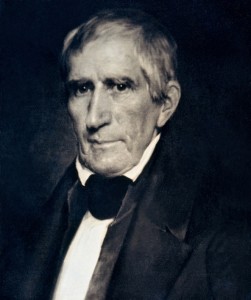 When we think of the president of the United States…in general terms, we often wonder if he will be good enough to be re-elected and serve the maximum term of eight years. We seldom think about whether or not he will finish his first year…or even month for that matter. And few of us can name the president with the sad title of being the president of the United States for the shortest term. Nevertheless, that is a record that has to be held by someone, and that man was William Henry Harrison, who was our 9th President. Harrison’s inaugural speech, delivered on a bitterly cold March morning, lasted one hour and forty five minutes. Harrison wasn’t really feeling well at the time, and went to bed at the end of inauguration day with a bad cold. The cold quickly developed into what would become a fatal case of pneumonia. I have to wonder if he would have been just fine in this day and age of modern medicine. Not everyone gets pneumonia these days, but most of those who do, survive and go on to lead long lives. Pneumonia isn’t the death sentence these days that it used to be.
When we think of the president of the United States…in general terms, we often wonder if he will be good enough to be re-elected and serve the maximum term of eight years. We seldom think about whether or not he will finish his first year…or even month for that matter. And few of us can name the president with the sad title of being the president of the United States for the shortest term. Nevertheless, that is a record that has to be held by someone, and that man was William Henry Harrison, who was our 9th President. Harrison’s inaugural speech, delivered on a bitterly cold March morning, lasted one hour and forty five minutes. Harrison wasn’t really feeling well at the time, and went to bed at the end of inauguration day with a bad cold. The cold quickly developed into what would become a fatal case of pneumonia. I have to wonder if he would have been just fine in this day and age of modern medicine. Not everyone gets pneumonia these days, but most of those who do, survive and go on to lead long lives. Pneumonia isn’t the death sentence these days that it used to be.
William Harrison was the last president born as an English subject before the American Revolution. After that time, it became law that the president must be a natural born citizen, something that has sparked bitter battles in these modern times. He hailed from Virginia, and attended college intending to become a doctor, but opted to join the army before finishing his degree. President John Adams took note of Harrison’s exemplary service in the Indian Wars of the Northwest Territories. In 1801, President Adams appointed him governor of the Northwest Territories, which is now Indiana and Illinois. Harrison later fought in the Battle of the Thames River during the War of 1812. After that time, he decided to go into politics, and went on to become a congressman and the ambassador to Colombia before running with John Tyler on the Whig Party ticket in the presidential election of 1840, which he won, but this would not prove to be a long term in office for him. In fact, his death came exactly one month after he was inaugerated into office.
I have to wonder what things he might have done differently than his running mate, John Tyler did. Harrison was 68 years and 23 days old when he took office. He was the oldest president to take office until Ronald 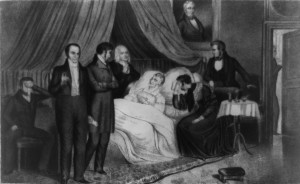 Reagan in 1981. After his passing, there was a brief constitutional crisis, because this had never happened before, and it had to be decided, who would take over. The solution was not widely accepted, and there were disputes as to the presidential line of succession, with regard to the Constitution up until the passage of the 25th Amendment in 1967. William Henry Harrison was the grandfather of Benjamin Harrison, who was the 23rd President from 1889 to 1893, so his line did have a second chance at the course that the country would take, even though he was not directly involved. Of course, there is nothing to indicate that Benjamin would have had the same values as William did. Things change over the years, but he was a Republican…a good thing in my opinion.
Reagan in 1981. After his passing, there was a brief constitutional crisis, because this had never happened before, and it had to be decided, who would take over. The solution was not widely accepted, and there were disputes as to the presidential line of succession, with regard to the Constitution up until the passage of the 25th Amendment in 1967. William Henry Harrison was the grandfather of Benjamin Harrison, who was the 23rd President from 1889 to 1893, so his line did have a second chance at the course that the country would take, even though he was not directly involved. Of course, there is nothing to indicate that Benjamin would have had the same values as William did. Things change over the years, but he was a Republican…a good thing in my opinion.
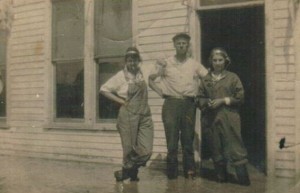 After my husband, Bob’s 2nd great grandma, Mary LuLu Taylor remarried, following the death of her first husband, James Leary, on March 26, 1888, she and her second husband had three children, bringing to four the total number of her children. Her life had taken her from Forsyth, Montana to Shelby, Missouri, where she met James Begier, who became her second husband. Later, they would move to several other times, but Montana always seemed to be in her blood and she would return there several times. Her daughter Mabel Claire Begier met and married her husband, Edward Anthony Brown in Rosebud, Montana. I’m not positive at what point Mabel became a telephone operator, but she did, and as it turns out, that’s where she was working during one of the floods that took place in Montana. That job, at that time in history, put her right in the middle of a serious situation, and in a position to help those in need of assistance.
After my husband, Bob’s 2nd great grandma, Mary LuLu Taylor remarried, following the death of her first husband, James Leary, on March 26, 1888, she and her second husband had three children, bringing to four the total number of her children. Her life had taken her from Forsyth, Montana to Shelby, Missouri, where she met James Begier, who became her second husband. Later, they would move to several other times, but Montana always seemed to be in her blood and she would return there several times. Her daughter Mabel Claire Begier met and married her husband, Edward Anthony Brown in Rosebud, Montana. I’m not positive at what point Mabel became a telephone operator, but she did, and as it turns out, that’s where she was working during one of the floods that took place in Montana. That job, at that time in history, put her right in the middle of a serious situation, and in a position to help those in need of assistance.
When we think of any disaster…be it fire, earthquake, tornado, or flood, our first instinct these days is to dial 911 on our phones. That has become the go to number for all kinds of help in times of need. That wasn’t always the case though. Years ago, it was the operator you called for help. You simply dialed “0” to get in touch with someone who could connect you with any branch of emergency help there was…as well as to let everyone else in town know about the emergency…at least back then they could. Privacy laws would have prevented that these days. Of course, if it was a big emergency, letting everyone know would be her job.
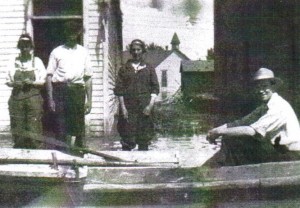 Mabel Begier was an operator during an emergency that would have qualified as one in which it was acceptable to let people know, but then my guess is that most people already knew that it was coming. Floods in towns where you live near a river are common in the Spring, especially after a particularly high snowfall year. People who live near rivers already know that Spring means that you have to watch the water levels, stay prepared to evacuate, and stay informed at all times. At that time in history, when a warning needed to be sent out, you called the operator to get the warning out. That was where Mabel came in, and she loved her job. I think the job that she had was very important, and she was a key part of the emergency efforts of that era.
Mabel Begier was an operator during an emergency that would have qualified as one in which it was acceptable to let people know, but then my guess is that most people already knew that it was coming. Floods in towns where you live near a river are common in the Spring, especially after a particularly high snowfall year. People who live near rivers already know that Spring means that you have to watch the water levels, stay prepared to evacuate, and stay informed at all times. At that time in history, when a warning needed to be sent out, you called the operator to get the warning out. That was where Mabel came in, and she loved her job. I think the job that she had was very important, and she was a key part of the emergency efforts of that era.
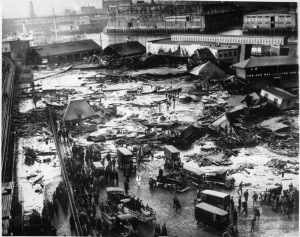 These days, most tsunami waves come with prior warning…at least since the 1946 wave that hit Alaska and Hawaii. Nevertheless, there are disastrous waves that are largely unpredictable, and those can be as deadly as the ones that the Pacific Tsunami Warning System warns people about. One in particular I had never heard of, until my sister Cheryl Masterson heard about it and mentioned it a few days ago. It happened in Boston, Massachusetts on January 15, 1919, and while it was of a very different variety than most tsunamis, it was deadly nevertheless. This tsunami was so strange, in fact, that most people wouldn’t even believe that this is a true story, but it did happen.
These days, most tsunami waves come with prior warning…at least since the 1946 wave that hit Alaska and Hawaii. Nevertheless, there are disastrous waves that are largely unpredictable, and those can be as deadly as the ones that the Pacific Tsunami Warning System warns people about. One in particular I had never heard of, until my sister Cheryl Masterson heard about it and mentioned it a few days ago. It happened in Boston, Massachusetts on January 15, 1919, and while it was of a very different variety than most tsunamis, it was deadly nevertheless. This tsunami was so strange, in fact, that most people wouldn’t even believe that this is a true story, but it did happen.
Around 12:40pm on January 15, 1919, a storage tank holding 2.3 million gallons of molasses exploded at the Purity Distilling Co. in the North End of Boston, sending waves of molasses rushing through the streets at almost 35 miles per hour. I’m sure that many people wouldn’t even think of this event as being at all dangerous, I mean after all, it’s just molasses. Nevertheless, a 25 foot high wave of molasses coming at you going 35 miles per hour is as deadly as being hit be a car. There was no warning, and in reality, there couldn’t 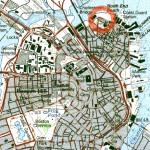 be. The molasses was being stored in the tank awaiting transfer to another plant and, due to its quickly rising temperature, it set off a tragic and previously unheard of chain of events. According to witnesses, the ground shook as if a tornado or freight train were coming down the street.
be. The molasses was being stored in the tank awaiting transfer to another plant and, due to its quickly rising temperature, it set off a tragic and previously unheard of chain of events. According to witnesses, the ground shook as if a tornado or freight train were coming down the street.
According to The Boston Globe, citizens “were picked up by a rush of air and hurled many feet.” A truck itself was picked up by the gushing wave and thrown into Boston Harbor. The force of the wave was so destructive, it almost tipped a railroad car off of Boston’s elevated railway tracks.” And The Boston Post described the gruesome scene, “Molasses, waist deep, covered the street and swirled and bubbled about the wreckage. Here and there struggled a form — whether it was animal or human being was impossible to tell. Horses died like so many flies on sticky fly-paper. The more they struggled, the deeper in the mess they were ensnared. Human beings — men and women — suffered likewise.”
The final death toll was set at 21, while 150 people were injured. The dead were either crushed by debris filled molasses, or drowned by the molasses itself. People and animals were seen struggling, some for which nothing could be done. The clean up was massive. Fire trucks were brought in to hose down the streets, and welders to 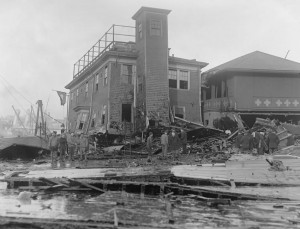 cut the tank up. The harbor was brown until summer. The molasses seeped into every crack, and it is said that on hot summer days, you could smell it for decades. I’m not sure how that could be, but maybe their minds played tricks in them too. In the end, the public outcry made a lawsuit necessary. The townspeople brought a class-action suit against the United States Industrial Alcohol Company, which had recently bought the Purity Distilling Company. Three years of hearings later, the USIAC was found guilty and forced to pay $600,000, which would equate to almost $10 million today, in settlements for negligence. The wave was as deadly as any tsunami could have been, but in reality, no warning could have prevented this tragedy.
cut the tank up. The harbor was brown until summer. The molasses seeped into every crack, and it is said that on hot summer days, you could smell it for decades. I’m not sure how that could be, but maybe their minds played tricks in them too. In the end, the public outcry made a lawsuit necessary. The townspeople brought a class-action suit against the United States Industrial Alcohol Company, which had recently bought the Purity Distilling Company. Three years of hearings later, the USIAC was found guilty and forced to pay $600,000, which would equate to almost $10 million today, in settlements for negligence. The wave was as deadly as any tsunami could have been, but in reality, no warning could have prevented this tragedy.
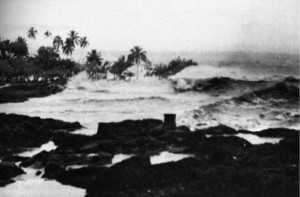 Most of us think of April 1st as April Fools Day…a day recognized all over the world as a day set aside to pull pranks, hoaxes, and practical jokes on your friends neighbors and co-workers. I can remember many pranks pulled by my sisters, my parents, and me over the years. But, not everything that happens on April 1st can be considered a funny joke…as was the case on April 1, 1946, when a 7.4 magnitude earthquake was recorded in the North Pacific Ocean off of Unimak Island. The island is a part of the Aleutian chain in Alaska. When the earthquake struck, in the middle of the night, 13,000 feet beneath the surface of the ocean, a devastating tidal wave immediately hit the nearest land…Unimak Island. The wave estimated at 100 feet high, crashed into a lighthouse located 30 feet above sea level, where a five people lived. The lighthouse was smashed and the people living inside were killed instantly. They had no warning of impending disaster and death.
Most of us think of April 1st as April Fools Day…a day recognized all over the world as a day set aside to pull pranks, hoaxes, and practical jokes on your friends neighbors and co-workers. I can remember many pranks pulled by my sisters, my parents, and me over the years. But, not everything that happens on April 1st can be considered a funny joke…as was the case on April 1, 1946, when a 7.4 magnitude earthquake was recorded in the North Pacific Ocean off of Unimak Island. The island is a part of the Aleutian chain in Alaska. When the earthquake struck, in the middle of the night, 13,000 feet beneath the surface of the ocean, a devastating tidal wave immediately hit the nearest land…Unimak Island. The wave estimated at 100 feet high, crashed into a lighthouse located 30 feet above sea level, where a five people lived. The lighthouse was smashed and the people living inside were killed instantly. They had no warning of impending disaster and death.
The Wave then headed toward Hawaii, at 500 miles an hour. Hawaii was 2,400 miles south of the epicenter. 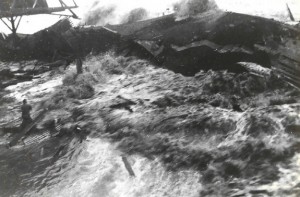 Captain Wickland of the United States Navy spotted the coming wave at about 7am…four and a half hours after the quake. Wickland’s position on the bridge was 46 feet above sea level, and he said he was eye level with a “monster wave” that was two miles long. I can only imagine how he must have felt looking at that wave. The word helpless is the first word to come to my mind. As the wave came into Hilo Bay, the water first receded, leaving ships on the sea floor beside fish flopping in the sand. Then, the tsunami struck full force. The wave was 32 feet high, and it completely destroyed about a third of the city. The Wailuku River bridge was picked up and relocated 300 feet from it’s original position. In Hilo, 96 people lost their lives. Other parts of Hawaii were hit by waves up to 60 feet. In Laupahoehoe, a schoolhouse was crush, killing the teacher and 25 students. The tsunami was seen as far away as Chili, where unusually high waves crashed ashore 18 hours after the earthquake hit. There were no casualties were reported there.
Captain Wickland of the United States Navy spotted the coming wave at about 7am…four and a half hours after the quake. Wickland’s position on the bridge was 46 feet above sea level, and he said he was eye level with a “monster wave” that was two miles long. I can only imagine how he must have felt looking at that wave. The word helpless is the first word to come to my mind. As the wave came into Hilo Bay, the water first receded, leaving ships on the sea floor beside fish flopping in the sand. Then, the tsunami struck full force. The wave was 32 feet high, and it completely destroyed about a third of the city. The Wailuku River bridge was picked up and relocated 300 feet from it’s original position. In Hilo, 96 people lost their lives. Other parts of Hawaii were hit by waves up to 60 feet. In Laupahoehoe, a schoolhouse was crush, killing the teacher and 25 students. The tsunami was seen as far away as Chili, where unusually high waves crashed ashore 18 hours after the earthquake hit. There were no casualties were reported there.
The tsunami brought to light a need for some kind of a warning system. The warning system, called the Seismic SeaWave Warning System was established two years later. It is now known as the Pacific Tsunami 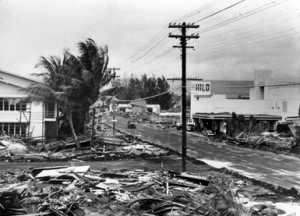 Warning System, and it uses undersea buoys throughout the ocean, along with seismic activity detectors to predict killer waves. The system is still in use, and has warned many people in time to get to safety. Nevertheless, on its first use…November 4, 1952, the people evacuated successfully, but the wave never materialized. I suppose that could have been listed as a successful failure, but in that case, it wasn’t about whether or not the wave came, but rather, if it did, that the people were safely away. A system like this one can’t save everyone. I’m sure that some waves just get to land too quickly, but every life saved matters. The April Fools Day tsunami was on April 1st, but no one would call it a joke… and that’s for sure.
Warning System, and it uses undersea buoys throughout the ocean, along with seismic activity detectors to predict killer waves. The system is still in use, and has warned many people in time to get to safety. Nevertheless, on its first use…November 4, 1952, the people evacuated successfully, but the wave never materialized. I suppose that could have been listed as a successful failure, but in that case, it wasn’t about whether or not the wave came, but rather, if it did, that the people were safely away. A system like this one can’t save everyone. I’m sure that some waves just get to land too quickly, but every life saved matters. The April Fools Day tsunami was on April 1st, but no one would call it a joke… and that’s for sure.
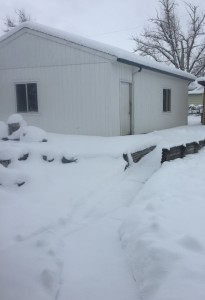 There is an old saying, “If March comes in like a lion, it will go out like a lamb.” If that’s the case, then one must assume that the opposite is also true. And in the case of March, 2016…the opposite would definitely be the case. Bob and I were married on March first, and so we go to Thermopolis around that time to celebrate our anniversary. This year was absolutely beautiful!! It was warm with no snow, and our quiet little walks were just lovely. The groundhog had predicted an early Spring this year…and unusual prediction for him, so I was feeling very optimistic about the remainder of the Winter…or the lack thereof. Now it’s not that I’m superstitious, and I don’t believe that these predictions are superstition anyway, but rather God’s way of showing us little signs of His plans for the future. He tells the animals things that humans just don’t hear, like telling the geese when to fly south or to head north. We humans have somehow become so scientific that we fail to listen to the signs from God.
There is an old saying, “If March comes in like a lion, it will go out like a lamb.” If that’s the case, then one must assume that the opposite is also true. And in the case of March, 2016…the opposite would definitely be the case. Bob and I were married on March first, and so we go to Thermopolis around that time to celebrate our anniversary. This year was absolutely beautiful!! It was warm with no snow, and our quiet little walks were just lovely. The groundhog had predicted an early Spring this year…and unusual prediction for him, so I was feeling very optimistic about the remainder of the Winter…or the lack thereof. Now it’s not that I’m superstitious, and I don’t believe that these predictions are superstition anyway, but rather God’s way of showing us little signs of His plans for the future. He tells the animals things that humans just don’t hear, like telling the geese when to fly south or to head north. We humans have somehow become so scientific that we fail to listen to the signs from God.
Of course, the scientists would say that they are able to predict the weather too, and perhaps they do listen to the signs of God, whether they admit that is what they are doing or not. Still, I find it odd that things like the groundhog not seeing his shadow on February 2nd, or the way March makes it’s annual entrance, can have such an impact of the weather over the next month or so, but they do nevertheless. One thing that many of us have come to look for is the time when the geese fly south. If they head out early, we have a pretty good idea that Winter will soon follow, but if the stay around into late fall, things could be very different for the Winter. They simply have been told that there is no hurry to leave. It is maybe the one sign from God that we humans have noticed over the years.
Be that as it may, we have arrived at the end of March in Wyoming. Enter Winter Storm Troy!! This Winter has been a relatively easy one, even though, the snow that fell in mid-December, didn’t leave the streets until mid-February. Nevertheless, I am pretty much over Winter after the first snow of the season, so I was looking forward to an early Spring. Now, with the end of March upon us, it decides to follow the old saying, and go out 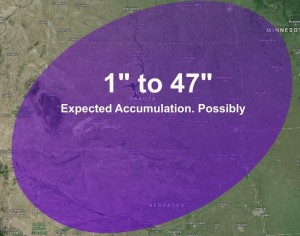 like a lion…since it came in like a lamb. That said, we are sitting here in Wyoming with about sixteen inches of snow on the ground, many businesses closed, and schools that would be…were it not for Spring Break. This storm is not supposed to hang around very long, but those unfortunate people in its path could get anywhere from 1″ to 47″ of the white stuff. I certainly hope we are not on the 47″ end of that scale. The snow is expected to continue through tonight and finally heading out around 6pm tomorrow. After that, look out, because when the temperatures heat up to the low fifties by Sunday, all this snow is going to melt, and become…a whole lot of water. I guess that is the April Fools Day joke in all of this weather prediction process.
like a lion…since it came in like a lamb. That said, we are sitting here in Wyoming with about sixteen inches of snow on the ground, many businesses closed, and schools that would be…were it not for Spring Break. This storm is not supposed to hang around very long, but those unfortunate people in its path could get anywhere from 1″ to 47″ of the white stuff. I certainly hope we are not on the 47″ end of that scale. The snow is expected to continue through tonight and finally heading out around 6pm tomorrow. After that, look out, because when the temperatures heat up to the low fifties by Sunday, all this snow is going to melt, and become…a whole lot of water. I guess that is the April Fools Day joke in all of this weather prediction process.
 As a young mother of two daughters, both under 4, there were days when the world seemed a scary place. March 28, 1979 was one of those days. At 4am that March morning, an event took place that changed the way we felt about nuclear power. Suddenly, it became just a little bit dangerous. We were used to power plants, and they had never seemed like anything that could cause great harm. All that changed on March 28, 1979, when a pressure valve in the Unit-2 reactor at Three Mile Island failed to close. Cooling water, contaminated with radiation, drained from the open valve into adjoining buildings, and the core began to dangerously overheat. It was the worst accident in the history of the United States nuclear power industry.
As a young mother of two daughters, both under 4, there were days when the world seemed a scary place. March 28, 1979 was one of those days. At 4am that March morning, an event took place that changed the way we felt about nuclear power. Suddenly, it became just a little bit dangerous. We were used to power plants, and they had never seemed like anything that could cause great harm. All that changed on March 28, 1979, when a pressure valve in the Unit-2 reactor at Three Mile Island failed to close. Cooling water, contaminated with radiation, drained from the open valve into adjoining buildings, and the core began to dangerously overheat. It was the worst accident in the history of the United States nuclear power industry.
The place was the Three Mile Island nuclear power plant. It was built in 1974 on a sandbar on Pennsylvania’s Susquehanna River, just 10 miles downstream from the state capitol in Harrisburg. The second reactor began operating in 1978, and the plant was given rave reviews for generating affordable and reliable energy in a time of energy crisis. Then came disaster. A broken pressure valve started leaking the cooling water, and the emergency cooling pumps automatically went into operation. This process would have taken care of the problem, if not for human intervention. The operators misread the confusing and contradictory readings, and shut down the emergency water system. The reactor was also shut down, but residual heat from the fission process was still being released. The next morning, the core temperature was over 4,000 degrees, just 1,000 degrees short of meltdown. Had a meltdown occurred, deadly radiation would have drifted across the countryside, fatally sickening a potentially great number of people. The plant operators struggled to understand what had happened, while contaminated water was releasing radioactive gases throughout the plant. The radiation levels, were not immediately life threatening to the plant  workers, but they were dangerous. The core continued to cook as the contaminated water was contained and precautions were taken to protect the operators.
workers, but they were dangerous. The core continued to cook as the contaminated water was contained and precautions were taken to protect the operators.
Then, about 8am the news leaked to the outside world. The company tried to sugar coat it as much as they could, saying that no one outside the plant was in danger, but when it was discovered that at least a small amount of radiation had leaked to the area, the governor told people to stay in doors as a precaution. The reality was sinking in. This wasn’t as benign as they had tried to make it seem. In the end, I suppose the damage wasn’t great, but it could have been, and I recall feeling just a little less safe.
 When we look at the reasons that the United States entered World War II, we think of the Japanese attack on Pearl Harbor, and we would be correct, but there was another dictator who committed so many atrocities during and before World War II, that it seems to me inevitable that we would have had to make that decision sooner or later. Adolf Hitler was a German politician, the leader of the Nazi Party, elected Chancellor of Germany from 1933 to 1945, and Führer, or leader of Nazi Germany from 1934 to 1945. One of his worst acts as Führer of Nazi Germany, was when he initiated World War II in Europe with the invasion of Poland in September 1939 and the worst act was, of course, the Holocaust.
When we look at the reasons that the United States entered World War II, we think of the Japanese attack on Pearl Harbor, and we would be correct, but there was another dictator who committed so many atrocities during and before World War II, that it seems to me inevitable that we would have had to make that decision sooner or later. Adolf Hitler was a German politician, the leader of the Nazi Party, elected Chancellor of Germany from 1933 to 1945, and Führer, or leader of Nazi Germany from 1934 to 1945. One of his worst acts as Führer of Nazi Germany, was when he initiated World War II in Europe with the invasion of Poland in September 1939 and the worst act was, of course, the Holocaust.
During the Holocaust, an insane Hitler, decided that the Jewish people were Untermenschen, or sub-human and socially undesirable, and determined in his heart to kill them. His first move in that direction was to begin rounding them up and placing them in prison camps. And one of the worst was Auschwitz. For a time, Hitler only placed the men in Auschwitz, but then on March 26, 1942, the first women prisoners arrived at Auschwitz.  Of course, Hitler’s intent was always to put the prisoners to death, but he decided to use them in whatever capacity he felt necessary and useful, before the time came to kill them. Since he considered the sub-human, he felt no guilt making them slaves. The prisoners were forced to work long hours, and were also used for medical experimentation. When the prisoners entered the camp, they were strip searched, male and female alike, and forced to stand naked in front of the guards during that time. It didn’t matter how cold they were. They did not count in the eyes of the Germans, because they were Untermenschen…sub-human. As a woman, I can only imagine how these first female prisoners must have felt. They were already very much aware that the Germans did not respect their race, so why would they feel differently about the fact that they were women. It would have been a very scary time. I’m sure they did not know if they would be raped and then killed, or what would happen to them. Their entry into the prison camp had already proven that they were nothing in the eyes of their captors.
Of course, Hitler’s intent was always to put the prisoners to death, but he decided to use them in whatever capacity he felt necessary and useful, before the time came to kill them. Since he considered the sub-human, he felt no guilt making them slaves. The prisoners were forced to work long hours, and were also used for medical experimentation. When the prisoners entered the camp, they were strip searched, male and female alike, and forced to stand naked in front of the guards during that time. It didn’t matter how cold they were. They did not count in the eyes of the Germans, because they were Untermenschen…sub-human. As a woman, I can only imagine how these first female prisoners must have felt. They were already very much aware that the Germans did not respect their race, so why would they feel differently about the fact that they were women. It would have been a very scary time. I’m sure they did not know if they would be raped and then killed, or what would happen to them. Their entry into the prison camp had already proven that they were nothing in the eyes of their captors.
 Between 1939 and 1945, there were many plans to try to assassinate Hitler. The most well known, Operation Valkyrie, which came from within Germany and was at least partly driven by the increasing prospect of a German defeat in the war. On July 20, 1944, Claus von Stauffenberg planted a bomb in one of Hitler’s headquarters…known as the Wolf’s Lair at Rustenburg. Hitler survived because staff officer Heinz Brandt moved the briefcase containing the bomb behind a leg of the heavy conference table. When the bomb exploded, the table deflected much of the blast. Later, Hitler ordered savage reprisals resulting in the execution of more than 4,900 people. In the end, he would take his own life, in an effort not to be taken alive. Not a bad thing if you ask me, because the world is truly well rid of him.
Between 1939 and 1945, there were many plans to try to assassinate Hitler. The most well known, Operation Valkyrie, which came from within Germany and was at least partly driven by the increasing prospect of a German defeat in the war. On July 20, 1944, Claus von Stauffenberg planted a bomb in one of Hitler’s headquarters…known as the Wolf’s Lair at Rustenburg. Hitler survived because staff officer Heinz Brandt moved the briefcase containing the bomb behind a leg of the heavy conference table. When the bomb exploded, the table deflected much of the blast. Later, Hitler ordered savage reprisals resulting in the execution of more than 4,900 people. In the end, he would take his own life, in an effort not to be taken alive. Not a bad thing if you ask me, because the world is truly well rid of him.
 In every war, there are soldiers and there are those who serve in the background. Sometimes these people in the background have an astounding impact on the war effort. Such was the case, during World War II, when so many men were involved in the fighting, that it left very few people to work in the factories. It became obvious that the women were going to have to step up and help. Of course, it wasn’t all women either. My Uncle Bill Spencer did that work as well, because they wouldn’t take him in the service due to a hernia and flat feet. Uncle Bill, and his sisters, my aunts, Laura and Ruth Spencer, all worked at a job that would make the women famous as Rosie the Riveter. These people worked at jobs traditionally done by men, such as building bombers at Ford Motor Company’s Willow Run plant in Michigan, and the shipyards in Wisconsin, which is where my aunts and uncle worked. The work was different than work the women had done before, but they proved that they could do it. Their motto became just that…We Can Do It!!
In every war, there are soldiers and there are those who serve in the background. Sometimes these people in the background have an astounding impact on the war effort. Such was the case, during World War II, when so many men were involved in the fighting, that it left very few people to work in the factories. It became obvious that the women were going to have to step up and help. Of course, it wasn’t all women either. My Uncle Bill Spencer did that work as well, because they wouldn’t take him in the service due to a hernia and flat feet. Uncle Bill, and his sisters, my aunts, Laura and Ruth Spencer, all worked at a job that would make the women famous as Rosie the Riveter. These people worked at jobs traditionally done by men, such as building bombers at Ford Motor Company’s Willow Run plant in Michigan, and the shipyards in Wisconsin, which is where my aunts and uncle worked. The work was different than work the women had done before, but they proved that they could do it. Their motto became just that…We Can Do It!!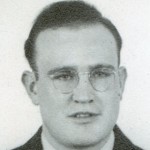
Now, seven decades later, and after several memorials in their honor, 30 of the “Rosie the Riveters” were honored with a trip to Washington DC to visit the National World War II Memorial. These women are in their 80s and 90s now, and it was a wonderful trip for them to go and see the memorial, pose for group photos with the US Capitol as a backdrop, have lunch at a Library of Congress building and visit Arlington National Cemetery. All that was awesome, but the real honor was that at every stop, people approached them, shook their hands, and said, “Thank you.” So often we overlook the opportunity to thank those who have served our country. We might feel like we are intruding, or don’t know what to say, or we just feel strange, but sometimes we need to set those feelings aside, so that we can honor all those who served…no matter in what capacity they served.
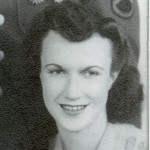 These women symbolized the American spirit that made this country great, and it is a spirit that needs to be brought back to this country. We are a great nation, with great people. When we make up our minds to do something, we get it done. The was the attitude these women took to the bomber factories and the shipyards. They decided that they could carry the load of the homefront to make the fighting men safer…and they did. I’m very proud that my Uncle Bill, and my aunts, Laura and Ruth were a part of such an elite group as these women who were honored today, I only wish they could have been a part of this trip. Both of my aunts are in Heaven now, and Uncle Bill is in a nursing home with Dementia, so they could not be there. Nevertheless, I’m very proud of all three of them…and these incredible women who were honored today.
These women symbolized the American spirit that made this country great, and it is a spirit that needs to be brought back to this country. We are a great nation, with great people. When we make up our minds to do something, we get it done. The was the attitude these women took to the bomber factories and the shipyards. They decided that they could carry the load of the homefront to make the fighting men safer…and they did. I’m very proud that my Uncle Bill, and my aunts, Laura and Ruth were a part of such an elite group as these women who were honored today, I only wish they could have been a part of this trip. Both of my aunts are in Heaven now, and Uncle Bill is in a nursing home with Dementia, so they could not be there. Nevertheless, I’m very proud of all three of them…and these incredible women who were honored today.
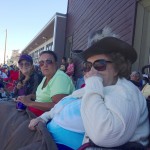 I saw an older woman standing at the bus stop today, waiting for the bus to arrive. That isn’t anything unusual, except that this woman was wearing a cowboy hat. I’m sure that many people wouldn’t think that was unusual either, given that I live in Wyoming, and in reality it was not that I thought it was unusual either, because I didn’t. What came to my mind was my mother, Collene Byer Spencer. Mom and my dad, Allen Spencer, embraced Wyoming, and the West in general, all their lives. They loved the history of the West, cowboy boots and cowboy hats, and they wore their western gear often, especially when they traveled.
I saw an older woman standing at the bus stop today, waiting for the bus to arrive. That isn’t anything unusual, except that this woman was wearing a cowboy hat. I’m sure that many people wouldn’t think that was unusual either, given that I live in Wyoming, and in reality it was not that I thought it was unusual either, because I didn’t. What came to my mind was my mother, Collene Byer Spencer. Mom and my dad, Allen Spencer, embraced Wyoming, and the West in general, all their lives. They loved the history of the West, cowboy boots and cowboy hats, and they wore their western gear often, especially when they traveled.
I know that there are lots of people who wear cowboy hats, as was proven by the older woman waiting for the bus, but what struck me at the time was that it brought back the memories of my mom wearing her cowboy hat. Mom especially loved 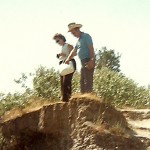 wearing her hat at the parade, as did my dad. They especially loved when the military people went by. Dad was a World War II veteran, and he was very proud of our soldiers. Mom loved it all. She would whoop and holler for every entry. I think she just didn’t want anyone to feel bad about their entry, and sometimes people would just sit there without clapping for anyone. Mom liked to make sure that everyone felt happy, parade or otherwise.
wearing her hat at the parade, as did my dad. They especially loved when the military people went by. Dad was a World War II veteran, and he was very proud of our soldiers. Mom loved it all. She would whoop and holler for every entry. I think she just didn’t want anyone to feel bad about their entry, and sometimes people would just sit there without clapping for anyone. Mom liked to make sure that everyone felt happy, parade or otherwise.
Mom and Dad had a number of cowboy hats, and the wore them all. They never went on vacation without a cowboy hat. I think they probably even took one on their 50th Anniversary cruise to Alaska. So many of my best camping memories include a cowboy hat. Dad never blew on a fire to get it going, he used his cowboy hat. Smart man, it would save a lot of work on the lungs…and the fire  always started faster for him than for us. So many cowboy hat memories.
always started faster for him than for us. So many cowboy hat memories.
As I drove past the older woman wearing the cowboy hat, I had a smile on my face, because just seeing her standing there reminded me so much of so many good times from my past. As a kid, I would never have thought of myself as a cowgirl…at that time in my life a cowgirl or country music just weren’t cool. These days I love country music, but I guess I’m still not a cowgirl. Nevertheless, my parents were, and they were proud of it. It doesn’t matter to me what they identified themselves with…I just know that I am very proud of them. And I love and miss them very much.
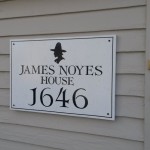
 A while back, I wrote a story about a house in Massachusetts that was built by our ancestor, James Noyes, who is my husband, Bob’s 7th great grandfather. Almost immediately, a cousin of ours, Paul Noyes told me that he had been there many times, and yet another cousin, David Noyes had been invited inside and had pictures. Of course, this was exactly what I was hoping for, because I wanted to talk about the interior of the home, but could not find any pictures online. So, I want to thank David for these beautiful pictures, and Paul for forwarding them to me, so that I can tell a little about the inside of this grand old house. My husband, Bob was sure that the interior had probably been renovated several times since the 1646 date that the house was built, but other than what has been documented, there is no indication of a massive remodel.
A while back, I wrote a story about a house in Massachusetts that was built by our ancestor, James Noyes, who is my husband, Bob’s 7th great grandfather. Almost immediately, a cousin of ours, Paul Noyes told me that he had been there many times, and yet another cousin, David Noyes had been invited inside and had pictures. Of course, this was exactly what I was hoping for, because I wanted to talk about the interior of the home, but could not find any pictures online. So, I want to thank David for these beautiful pictures, and Paul for forwarding them to me, so that I can tell a little about the inside of this grand old house. My husband, Bob was sure that the interior had probably been renovated several times since the 1646 date that the house was built, but other than what has been documented, there is no indication of a massive remodel.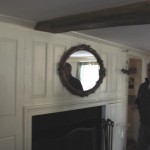
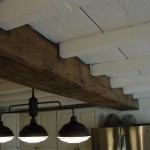
James Noyes, moved to and was co-founder of Newberry, Massachusetts in 1635, bringing with him, his wife Sarah Brown Noyes. Little was documented about where in Newbury they lived before the Noyes home was built in 1646, but the family grew by five children…Joseph, James, Sarah (who died at an unknown young age), Moses, and John. I would assume that their growing family was the reason for the large home to be built. Even with that, the home was not what we would consider large these days. The current home has five bedrooms, but it is my guess that the original probably had only three, a master bedroom for the parents, a bedroom for the boys, and a bedroom for the girls. The house was only one room deep in those years, and while it might have been somewhat small, I can only imagine what stories those walls would tell, if they could 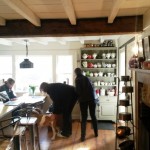
 talk. My guess is that there would be stories of laughter, sadness, and crying as new babies joined the family. The family grew, with the additions of Thomas, Rebecca, William, and a second daughter named Sarah, after her mother and the first Sarah, who had passed away.
talk. My guess is that there would be stories of laughter, sadness, and crying as new babies joined the family. The family grew, with the additions of Thomas, Rebecca, William, and a second daughter named Sarah, after her mother and the first Sarah, who had passed away.
James and Sarah lived in the house for the remainder of their days, during which time the house saw children come into the family, and children marry and move away, returning now and again to share their children with their parents. Then on October 22, 1656, just seven months after his second daughter named Sarah, was born, James passed away. The house saw the sadness of a family in mourning for its patriarch. Sarah became the head of the family then, and so it remained until her passing on September 13, 1691. James and Sarah were blessed with at least 47 grandchildren…not all of whom lived very long unfortunately. Not much is said about 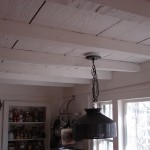
 what the children did with the home after their mother’s passing, but while it has been home to a number of families over the many years since it was built, it remains an important historical home and is listed on the National Registry of Historic Places. There were some changes, which added size to the home making it a five bedroom home at this present time. The last time the home was sold was in 2010, and it is my assumption that it was the current owners who allowed our cousin David Noyes to have a tour and take the pictures I now have of this beautiful home.
what the children did with the home after their mother’s passing, but while it has been home to a number of families over the many years since it was built, it remains an important historical home and is listed on the National Registry of Historic Places. There were some changes, which added size to the home making it a five bedroom home at this present time. The last time the home was sold was in 2010, and it is my assumption that it was the current owners who allowed our cousin David Noyes to have a tour and take the pictures I now have of this beautiful home.

